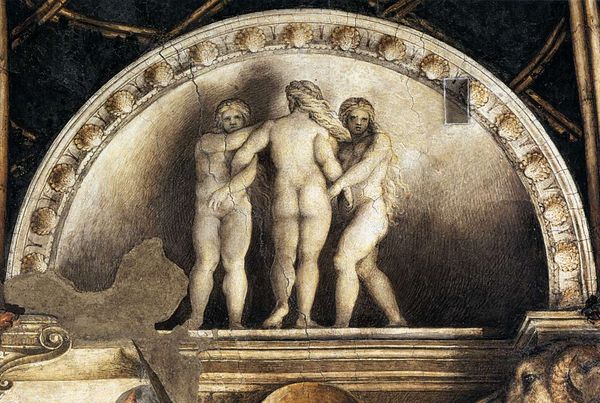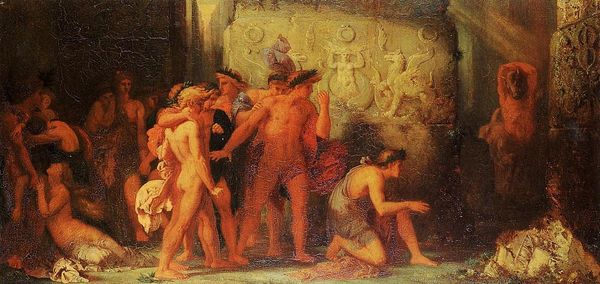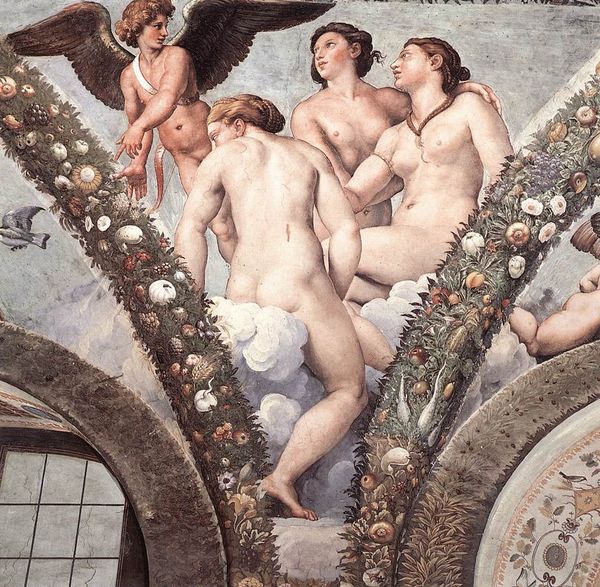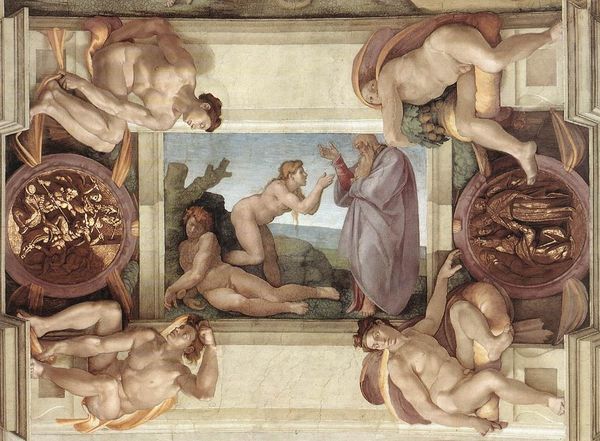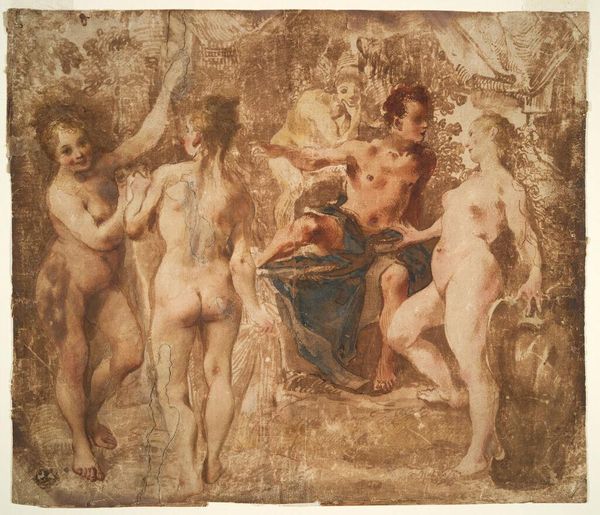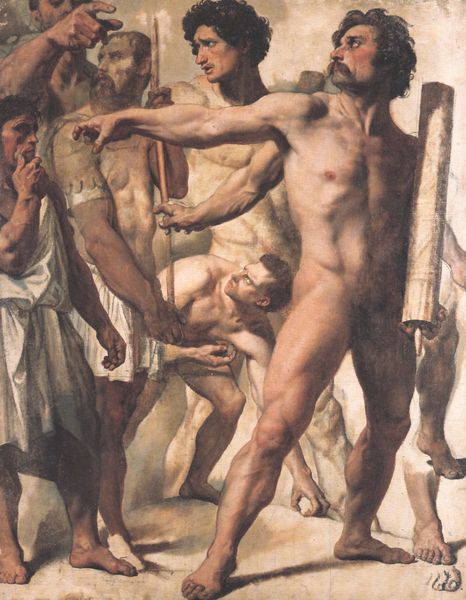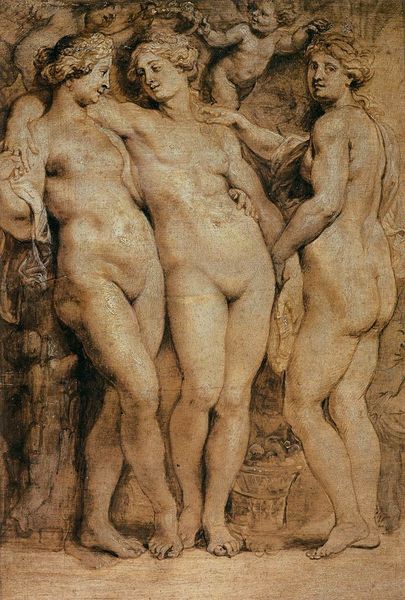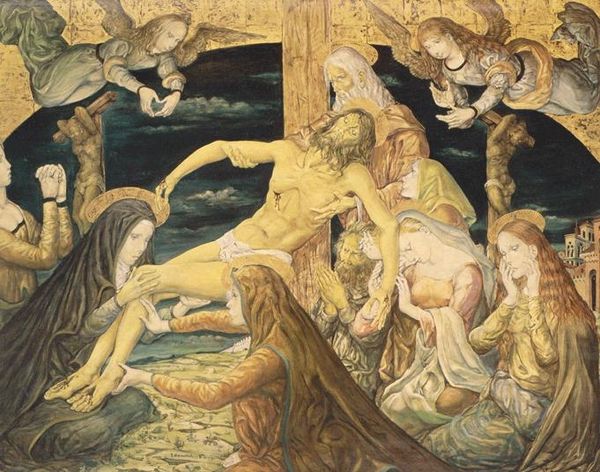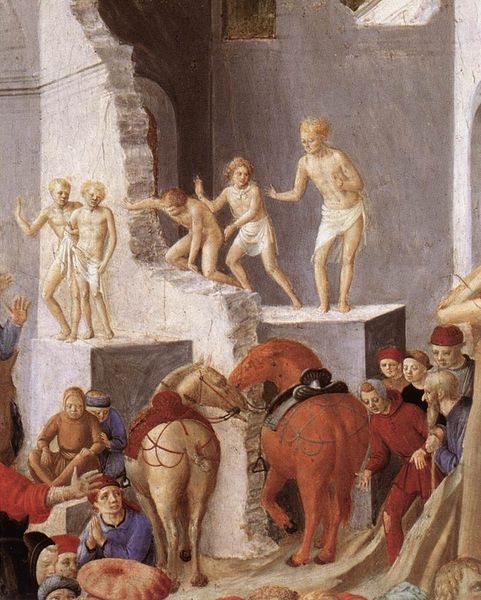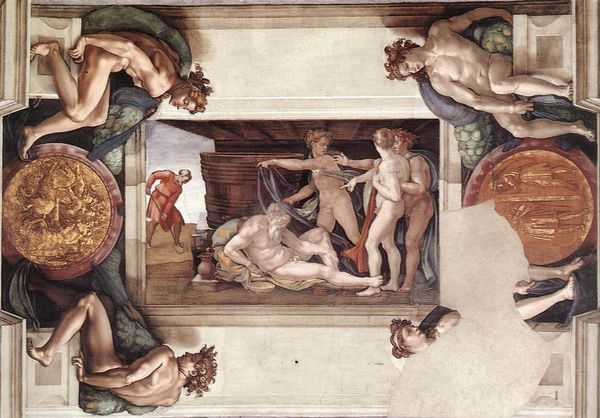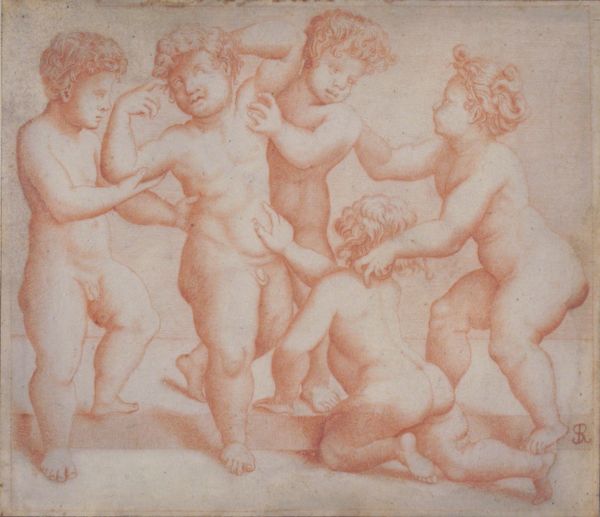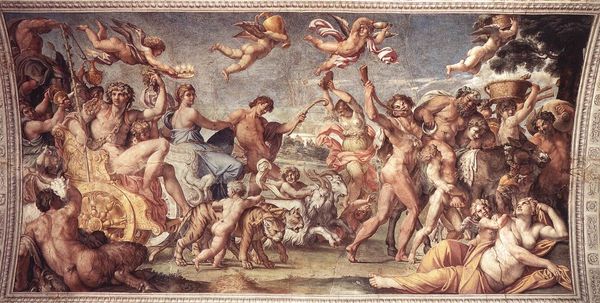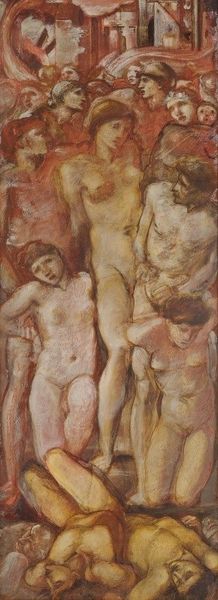
Dimensions: 128.2 x 209.8 cm
Copyright: Public domain
Edward Burne-Jones created "Venus Discordia" with watercolor and gouache in late 19th century Britain. The painting is titled after the Roman goddess of chaos, and we see a scene of violence and discord enacted by nude figures, with a lone female figure looking on. The Pre-Raphaelites like Burne-Jones were interested in classical subjects and painted scenes inspired by Greek and Roman mythology. Their works offered a moral critique of the contemporary Victorian period. What did it mean for an artist to turn to the classical past for images of the nude body, and scenes of erotic violence? Was this painting a critique of Victorian repression, or an endorsement of traditional hierarchies? In what ways were the values of the Victorian period shaping art institutions and cultural norms? Art historians consult letters, diaries, and exhibition reviews to help answer these questions. These documents can help us better understand the social and institutional context in which art is made.
Comments
No comments
Be the first to comment and join the conversation on the ultimate creative platform.
